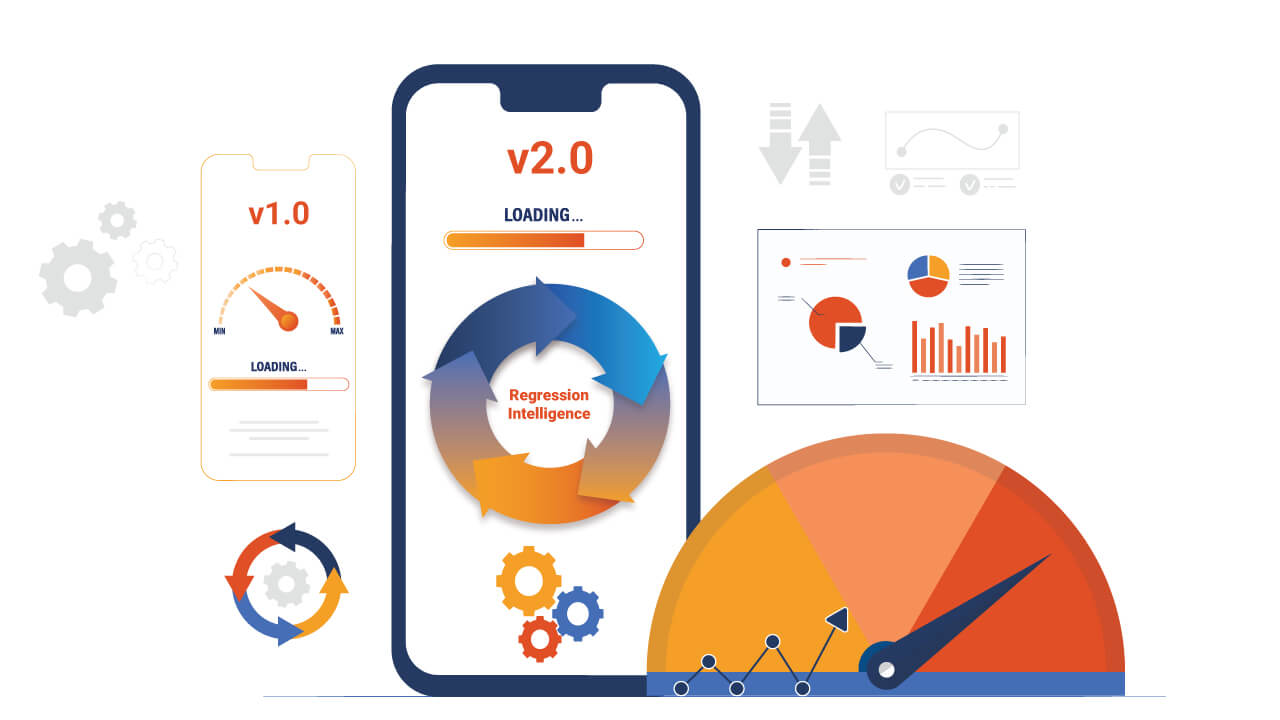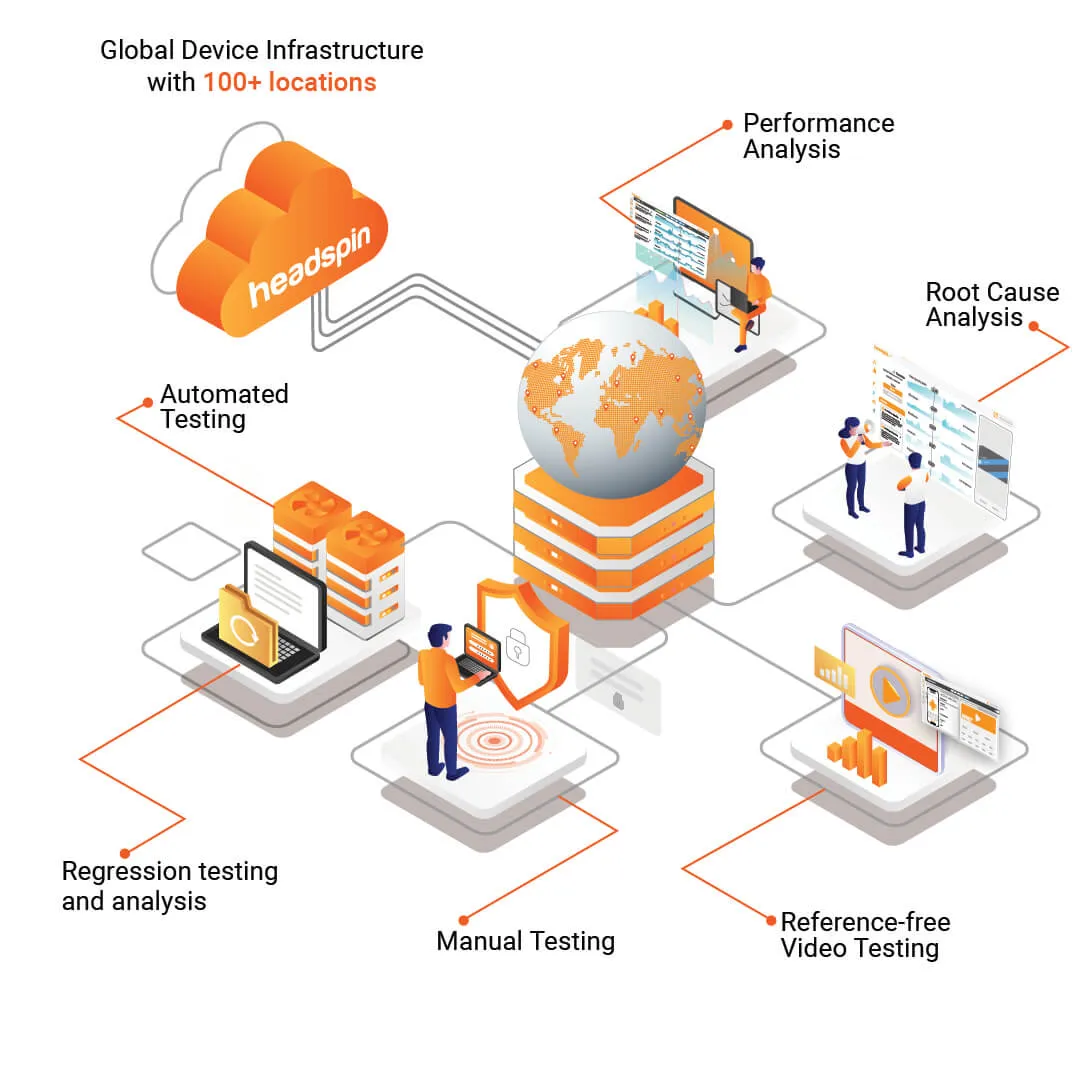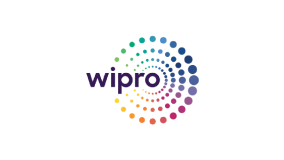Ensuring your website shines on every browser is like hitting a moving target in web development. But fret not! With the right cross-browser testing tool, you're not just shooting in the dark; you're equipped with a laser-guided system. This blog will unveil the 11 best cross-browser testing tools for 2024, highlighting how each can be a game-changer in your web development arsenal. So, whether you're a seasoned developer or just dipping your toes in the digital waters, let's dive into browser testing tools and ensure your website stands tall across all platforms.
What is Cross-Browser Testing?
Cross-browser testing is the practice of reviewing and verifying the functionality and appearance of a website across multiple web browsers to ensure consistent user experiences. It's not just about ensuring your website "works" on Chrome, Firefox, or Safari; it's about delivering a seamless and optimized user experience, regardless of the user's browser choice.
Benefits of Cross-Browser Testing
Enhanced User Experience
Every user deserves a flawless experience, regardless of the browser they use. Cross-browser testing ensures that your website functions well, whether someone is on an old version of Internet Explorer or the latest Chrome. This meticulous attention to detail fosters a positive user experience, enhancing satisfaction and engagement.
Broader Reach
The internet is vast and your website is reaching out to countless users. By making your site compatible with various browsers, you're extending your reach, embracing a wider audience. This inclusivity can translate into higher traffic, increased conversions, and a broader user base.
Early Bug Detection
Bugs are like uninvited guests at a party—they can ruin everyone's experience. Cross-browser testing acts as a vigilant bouncer, identifying and rectifying these bugs before they affect your users. Catching issues early in the development process saves time and resources and prevents potential damage to your website's reputation.
Improved SEO
Search engines provide users with top results, and websites that offer a great user experience rank higher. By ensuring your site functions well across all browsers, you're ticking a crucial box in the SEO checklist, potentially boosting your site's visibility and attracting more organic traffic.
Professionalism and Brand Image
A website is often the first point of contact between your brand and potential customers. A glitchy or inaccessible site on certain browsers can tarnish your brand's image. Cross-browser testing helps maintain a professional, polished online presence, reinforcing trust and credibility with your audience.
Cost Efficiency
Investing in cross-browser testing might seem like an added expense, but it's far more cost-effective in the long run. Addressing compatibility issues post-launch can be costly, not just in terms of fixing the issues but also in terms of lost revenue and damaged reputation. Proactive testing mitigates these risks, ensuring a smoother, more cost-effective operation.
Competitive Edge
In a digital landscape where user patience is thin, and options are plentiful, delivering a seamless experience can set you apart. Cross-browser testing ensures your website stands out by functioning flawlessly across all platforms, giving you a competitive edge in user satisfaction and retention.
Read: Top Cross Browser Testing Challenges Fixing Them
What are Cross-Browser Testing Tools
Cross-browser testing tools ensure that web applications function consistently across browsers, devices, and operating systems. These tools help developers identify and rectify discrepancies arising from different browser interpretations of web standards, ensuring a seamless user experience.
20 Best Cross-Browser Testing Tools
1. Selenium
Selenium stands as the towering figure in the realm of cross-browser testing tools. It's a suite that includes Selenium WebDriver for creating browser-based regression automation suites and tests and Selenium Grid for distributing scripts across multiple environments. Selenium's flexibility in writing tests in various programming languages and compatibility with various browsers and operating systems make it a favorite among developers and testers.
Key Features:
- It supports multiple languages, including Java, Python, and C#.
- Offers Selenium Grid to enable parallel testing.
- Integrates easily with other frameworks for a robust testing environment.
2. WebDriverIO
WebDriverIO is a popular choice for developers entrenched in the JavaScript ecosystem. This testing framework is built on Node.js and provides an easy syntax for writing tests, making it accessible for all developers. Its real-time execution feedback and support for modern web and mobile applications underscore its versatility.
Key Features:
- Seamless integration with cloud-based testing services.
- Offers synchronous and asynchronous testing.
- Extensive community plugins and services for enhanced functionality.
3. Karma
Karma is designed with AngularJS developers in mind, providing a productive testing environment that works well within Angular's ecosystem. It allows you to execute tests in browsers, offering a real-world perspective on how your code behaves. Karma's focus on efficiency and developer experience makes it a solid choice for web application testing.
Key Features:
- Executes tests in real browsers.
- Integrates with popular continuous integration tools.
- Supports testing on mobile devices and tablets.
4. Protractor
Protractor is tailored for Angular and AngularJS applications, providing a powerful framework for end-to-end testing. It interacts with your app as a user would, clicking on elements and filling out forms, making it an invaluable tool for developers looking to ensure their applications function correctly from the user's perspective.
Key Features:
- Built-in support for Angular-specific locator strategies.
- Integrates with Jasmine, Mocha, and other testing frameworks.
- Offers the ability to run tests on multiple browsers simultaneously.
5. Nightwatch.js
Nightwatch.js offers a clean and straightforward way to write end-to-end tests in Node.js. Its easy-to-understand syntax and built-in test runner make it a favorite for developers who want to set up and execute their UI tests quickly. Nightwatch's focus on simplicity without sacrificing power makes it an excellent tool for web developers of all skill levels.
Key Features:
- Easy to set up and configure.
- Supports page object pattern for test automation.
- Built-in command-line test runner.
6. Cypress
Cypress is a modern testing framework built for the web. It's known for its straightforward setup and real-time feedback, making testing more enjoyable for developers. Unlike many other testing frameworks, Cypress runs in the same run-loop as your application, providing more consistent and reliable results.
Key Features:
- Real-time test execution with automatic waiting, eliminating the need for manual waits or sleep.
- Full access to every DOM element, making debugging easier.
- Rich APIs for interacting with elements, creating custom commands, and handling assertions.
7. TestCafe
TestCafe provides a fresh perspective on browser testing by eliminating the need for WebDrivers. This tool is straightforward to install and use, making it an excellent choice for teams looking to streamline their testing process. Its approach to running tests directly in the browser ensures high ease and efficiency.
Key Features:
- No need for external plugins or tools; TestCafe uses Node.js to run tests.
- Concurrent testing capabilities allow you to run tests simultaneously on multiple browsers and machines.
- Built-in waiting mechanism automatically waits for elements to appear before executing tests.
8. CasperJS
CasperJS is a scripting & testing utility built on top of PhantomJS, the scriptable headless browser. It allows developers to create navigational scenarios and automate web application testing efficiently. While it's particularly suited for navigation and user interaction scenarios, its capabilities extend to a broad range of testing needs.
Key Features:
- Provides high-level functions to interact with web page elements.
- Includes utilities for testing, including assertions and testing suites.
- Capable of capturing screenshots, which is helpful for visual testing and debugging.
9. PhantomJS
PhantomJS, often paired with CasperJS, is a headless browser ideal for automated testing. It's particularly useful for continuous integration systems and situations where you don't need a graphical UI. Developers leverage PhantomJS for its fast and efficient web page handling and testing capabilities.
Key Features:
- Executes JavaScript without the need for a browser.
- It can simulate user actions like clicking and typing.
- Supports various web standards, including CSS selector, DOM handling, JSON, Canvas, and SVG.
10. SlimerJS
SlimerJS is akin to PhantomJS but renders using Gecko, the same engine that powers Firefox. This tool is excellent for developers looking to test their applications in an environment similar to Firefox. It provides scriptable browsing, allowing developers to automate tasks and tests in a browser-like environment.
Key Features:
- Executes scripts in a browser-like environment with access to web standards.
- Useful for testing web applications in a context similar to Firefox.
- It can capture web pages as rendered by the Gecko engine, which is useful for visual testing.
11. Puppeteer
Puppeteer stands out for its high-level API over the Chrome DevTools Protocol, allowing deep interaction with Chrome or Chromium. It's a powerful tool for developers focused on automated testing, web scraping, or browser automation. Puppeteer's direct control over the browser provides a detailed and nuanced approach to testing.
Key Features:
- It offers rich features for interacting with and controlling a web browser.
- Supports many actions, including navigation, form submission, and screenshot capture.
- It provides a high-level abstraction over the Chrome DevTools Protocol, making it accessible and powerful.
12. Playwright
Playwright is an open-source automation library developed by Microsoft, enabling reliable end-to-end testing for modern web applications. Using a single API, it supports multiple browsers, including Chromium, Firefox, and WebKit.
Key Features:
- Supports programming languages like JavaScript, Python, C#, and Java.
- Offers capabilities like network interception, multiple browser contexts, and automatic waiting, reducing test flakiness.
- Facilitates both headless and headed browser testing, providing flexibility in execution.
13. Watir
Watir (Web Application Testing in Ruby) is an open-source family of Ruby libraries for automating web browsers. It interacts with a browser like people do by clicking links, filling forms, and validating text.
Key Features:
- Supports multiple browsers, including Internet Explorer, Firefox, Chrome, Opera, and Safari.
- Utilizes Ruby, a flexible and easy-to-read programming language, making test scripts more maintainable.
- Integrates seamlessly with Behavior-Driven Development (BDD) tools like Cucumber, enhancing collaboration between developers and testers.
14. Galen Framework
Galen Framework tests web application layout and appearance. It is beneficial for responsive design testing and supports Selenium integration.
Key Features:
- Allows testing of the location and alignment of elements on a webpage across different devices and browsers.
- Provides a specialized language, Galen Specs, for describing complex layout validations.
- Supports image comparison features to detect visual discrepancies.
15. Sahi
Sahi is an open-source automation and testing tool for web applications, focusing on simplicity and ease of use. It supports both browser-based and server-based applications.
Key Features:
- Offers record and playback functionality, simplifying the creation of test scripts.
- Supports multiple browsers and operating systems, ensuring comprehensive test coverage.
- Provides inbuilt reporting and logging capabilities for better test management.
16. Robot Framework
Robot Framework is suitable for test automation and robotic process automation (RPA). It utilizes a keyword-driven testing approach.
Key Features:
- Extensible with a vast ecosystem of libraries and tools, including SeleniumLibrary for web testing.
- Supports writing test cases in plain English, enhancing readability and collaboration.
- Facilitates parallel test execution and integrates with various CI/CD tools.
17. Gauge
Gauge is a free and open-source test automation framework developed by ThoughtWorks. It is designed for acceptance testing and supports multiple languages, including Java, Ruby, and C#.
Key Features:
- Employs a modular and flexible architecture, allowing easy maintenance of test suites.
- Integrates seamlessly with popular tools like Selenium WebDriver, enabling cross-browser testing.
- Provides rich reporting and documentation features, enhancing test transparency.
18. Taiko
Taiko is a free and open-source browser automation tool built by ThoughtWorks. It is designed to be a reliable and user-friendly tool for testing modern web applications.
Key Features:
- Offers a simple and concise syntax for writing test scripts, improving productivity.
- Automatically waits for elements to be available, reducing test flakiness.
- Supports testing in headless mode, enabling efficient CI/CD integration.
19. Katalon Studio
Katalon Studio is a testing solution developed by Katalon LLC. It supports web, API, mobile, and desktop application testing.
Key Features:
- Provides a comprehensive IDE for creating and managing test cases.
- Supports record and playback, keyword-driven testing, and scripting modes.
- Integrates with various CI/CD tools and supports parallel execution.
20. TestProject
TestProject is enables test automation for web, mobile, and API testing. Built on Selenium and Appium, it offers a collaborative environment for teams.
Key Features:
- Provides a cloud-based test repository, enabling easy sharing and collaboration.
- Offers record and playback capabilities, along with coded tests in various languages.
- Integrates with CI/CD pipelines and provides detailed reporting and analytics.
Also Read: A Comprehensive Guide to Measuring and Comparing Cross-Platform Performance Metrics
How to Choose the Right Cross-Browser Testing Tool
- Compatibility with Target Browsers and Devices: Ensure the tool supports all the major browsers (Chrome, Firefox, Safari, Edge, etc.) and various devices, including desktop and mobile.
- Performance and Speed: Evaluate tools based on test execution speed and performance efficiency, particularly for large test suites and complex applications.
- Automation Support: Look for automation capabilities to streamline repetitive tests and integrate with CI/CD pipelines.
- Scalability and Cloud Support: Choose a tool that scales well with your testing needs and supports cloud-based testing to accommodate remote or distributed teams.
- Integration with Other Tools: Prioritize tools that integrate seamlessly with other testing frameworks, project management software, and CI/CD systems for a unified workflow.
- Ease of Use: Assess the tool’s usability, documentation quality, and required learning time, especially for teams new to cross-browser testing.
- Reporting and Analytics: Opt for tools with advanced reporting features to gain insights into test results, detect patterns, and track issues.
- Cost Efficiency: Balance the tool’s cost with its features to ensure you get the best value, especially if used long-term across multiple projects.
This methodology ensures an objective selection, optimizing the testing process for thorough, consistent cross-browser compatibility.
Trends in Cross-Browser Testing Tools for 2025
As we progress through 2025, several key trends are shaping the landscape of cross-browser testing tools:
- AI-Powered Testing: Artificial Intelligence is increasingly integrated into testing tools to enhance test generation, maintenance, and execution. AI algorithms can predict potential problem areas, optimize test coverage, and reduce the time required for test maintenance by automatically adapting to application changes.
- Comprehensive Mobile Testing: With the proliferation of mobile devices and browsers, there's a growing emphasis on tools that offer extensive mobile testing capabilities. This includes support for various mobile operating systems, real-device testing, and the ability to simulate different network conditions to ensure optimal performance across all mobile platforms.
- Integration with CI/CD Pipelines: Modern development practices demand seamless integration of testing tools with Continuous Integration and Continuous Deployment pipelines. This integration facilitates automated testing processes, ensuring code changes are continuously tested across all supported browsers. This leads to faster release cycles and improved software quality.
- Enhanced Collaboration Features: As remote work grows, cross-browser testing tools incorporate features promoting collaboration among distributed teams. This includes shared dashboards, real-time reporting, and integrated communication channels to streamline the testing process and facilitate effective teamwork.
- Focus on Performance Testing: Beyond functionality, there's an increasing focus on performance metrics. Tools now offer features that assess load times, responsiveness, and overall user experience across different browsers, ensuring that applications work correctly and efficiently.
HeadSpin: A Comprehensive Cross-Browser Testing Tool
HeadSpin stands out in the crowded field of cross-browser testing tools for its innovative approach and comprehensive features. It's not just a tool; it's a platform that provides developers and QA teams with a deep insight into their web applications' performance across various browsers and devices. Here's why HeadSpin could be your go-to choice for cross-browser testing in 2025:
- Real-World Testing Scenarios: HeadSpin allows you to test your applications in real-world conditions across different browsers, devices, and networks without simulators or emulators. This ensures that your findings are as accurate and actionable as possible.
- Global Device Cloud: With access to a global device cloud, HeadSpin provides the opportunity to test on various devices and browsers from various locations worldwide, ensuring your application is ready for a global audience.
- Performance Insights: Beyond just identifying bugs, HeadSpin offers detailed performance insights. This means you can not only find issues but also understand their impact on user experience and performance, enabling you to prioritize fixes based on real user impact.
- Automated and Manual Testing: HeadSpin supports both automated and manual testing, providing flexibility based on your team's needs and the specific testing scenario. This dual capability ensures thorough testing coverage.
Final Thoughts
Ensuring browser compatibility is not just about ticking off a checklist but embracing a broader vision of user inclusivity and experience. The right cross-browser testing tool simplifies your workflow and elevates your website's quality, ensuring it resonates with every user on every browser.
FAQs
Q1. What is the difference between cross-browser testing and browser automation testing?
Ans: Cross-browser testing ensures that a website or application works consistently across different browsers, while browser automation involves automating repetitive tasks and tests in the browser, often as part of cross-browser testing.
Q2. How often should cross-browser testing be conducted?
Ans: Cross-browser testing should be integral to your development cycle, especially when introducing new features or updates.
Q3. Can cross-browser testing be automated?
Ans: Many cross-browser testing tools offer automation capabilities, allowing for more efficient and frequent testing.
Q4. Is cross-browser testing necessary for all websites?
Ans: While it's crucial for most websites, especially those with a broad audience, the extent of testing can vary based on your user demographics and their preferred browsers.



























.png)


















-1280X720-Final-2.jpg)






